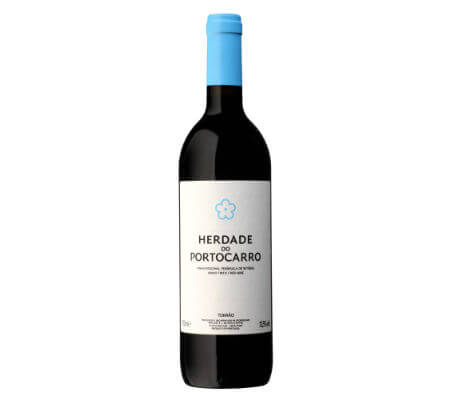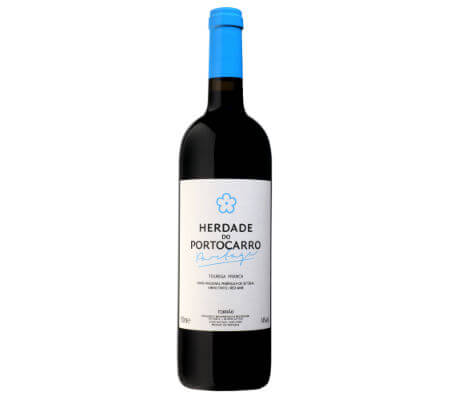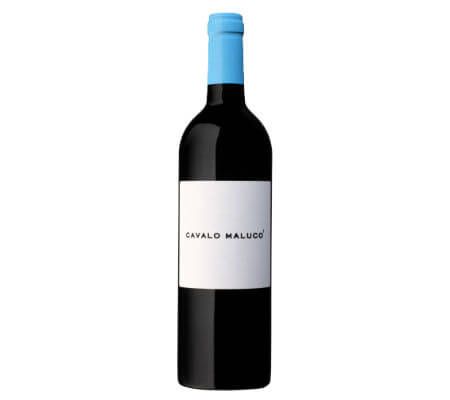Text João Barbosa | Translation Jani Dunne
I’m starting this text the same way I began the last one. Writing about one of my three favourite Portuguese wines is difficult given the necessary care for your common sense, pleasure, memories and the product’s intrinsic quality.
I appreciate certainty; even the certainty that comes with uncertainty. I like a Coca-Cola to be a Coca-Cola – always the same. I like the certainty within the uncertainty of great wines: every harvest is different, because the weather is never the same from year to year. But sharing a profile and quality turns them into princes. The years represent the body and the profile represents the surname.
Herdade do Portocarro is in west Alentejo – a place, which is registered as being somewhere else according to bureaucracy. It would be odd not to consider wines from Alcácer do Sal, Grândola, Santiago do Cacém and Sines as wines of Alentejo. This property is in Alcácer municipality, an area that is well known for its rice fields and pine forests.
If all the wines in Herdade do Portocarro deserve to be paid compliments, especially two of them: Anima and Cavalo Maluco; the former, because it is “a mess” caused by José Mota Capitão, its producer. The latter because… it’s the one, that is, one of my three favourite Portuguese red wines.
In that property in the Peninsula de Setúbal – although it’s not located there –, they make five reds, one white and one rosé. I will not comment on them, because I didn’t taste the Alfaiate Branco 2013 (Esgana-Cão, Galego-Dourado, Arinto and Antão Vaz) nor Autocarro Nº 27 2013 (Aragonês [Tempranillo], Touriga Nacional and Cabernet Sauvignon).
The wines by Herdade do Portocarro are surprising. I am not sure I understand them. They have never turned out as I had predicted. I do not recognise any similarities with others of the same area. Could it be the famous terroir, a wary character that comes out of nowhere and quickly disappears, although so many people claim they have experienced it?
Herdade do Portocarro 2011 has minerality and freshness in the mouth. It was made with the Tempranillo, Touriga Nacional and Cabernet Sauvignon varieties. Full-bodied, but not a brut. It’s a city-farmer.
I shared my surprise at the presence of the Touriga Franca variety with José Mota Capitão; I frown at the possibility that the queen of the Douro varieties would have made such a long trip through the country. Out of the non-Douro wines, only Herdade do Portocarro Partage Touriga Franca 2008 grants me the same pleasure as those of its region of origin. I can confirm that this variety needs friends; it does not make my heart beat faster on its own. The experience, at least, is worth it.

Herdade de Portocarro – Photo Provided by Herdade do Portocarro | All Rights Reserved

Herdade de Portocarro Partage Touriga Franca – Photo Provided by Herdade do Portocarro | All Rights Reserved
José Mota Capitão stepped into the limelight with the first wine in Portugal to be made using the Sangiovese variety – in fact, if I am not mistaken, he may have been the first to plant it. Year after year, the Italian variety reveals its sensuality, but not its fragility. An Italian accent, but not the citizenship. It’s from this place, from São Romão do Sado, a burough in Torrão, municipality of Alcácer do Sal (Setúbal district, “Setúbal Peninsula”), West Alentejo. I bet – but I don’t know for sure, because I haven’t asked – it’s the variety that this wine producer feels most fond of.
Anima wines confirm the beginning of uncertainty. They always turn out well; they have the same traits as their brothers and the same surname. They are not clones, nor twins. To comment on a specific year is only useful if one comments on all of the other years. I advise those who can afford it… to buy, savour and conclude.
Tears of Anima 2014 is a Sangiovese rosé. Its main advantage is using the variety that others do not, which results in a bouquet closer to that of a white wine – and the fresh kind: citrus fruits, lychees, and early-picked plums. It has the character that “all” rosés should have: low alcohol levels. In Portugal, food-friendly Portuguese wines are highly valued… is it an advantage? Drink this one for the pleasure of chatting and relaxing after the beach turned you red, because you forgot to apply SPF 20,000 sunscreen!

Herdade do Portocarro Tears of Anima – Photo Provided by Herdade do Portocarro | All Rights Reserved

Herdade do Portocarro Cavalo Maluco – Photo Provided by Herdade do Portocarro | All Rights Reserved
Now it’s time for my love: Cavalo Maluco (Crazy Horse). What an odd name! There is a reason for that. As a boy, José Mota Capitão played – as you do in many generations – Cowboys and Indians. Children tend to like winners… the boy who now makes wine wanted to be an Indian… perhaps one day he will produce a Sitting Bull!
Cavalo Maluco 2011 may well be the “craziest” of them all. It was a grand year, and chief Lakota galloped. It was born from the Touriga Franca, Touriga Nacional and Petit Verdot varieties.
Is it better than its predecessor?! And how about the one before that?! To be honest, I don’t know. I think so. The same advice goes to whoever can afford it: buy it, savour it and conclude.




Leave a Reply